Get a curated collection of design and architecture news in your inbox by signing up to our ICON Weekly newsletter
From decadent palazzos and ancient churches to subterranean artist studios nestled into the foothill Capodimonte, EDIT Napoli unleashed a thrilling spectacle of creativity and innovation
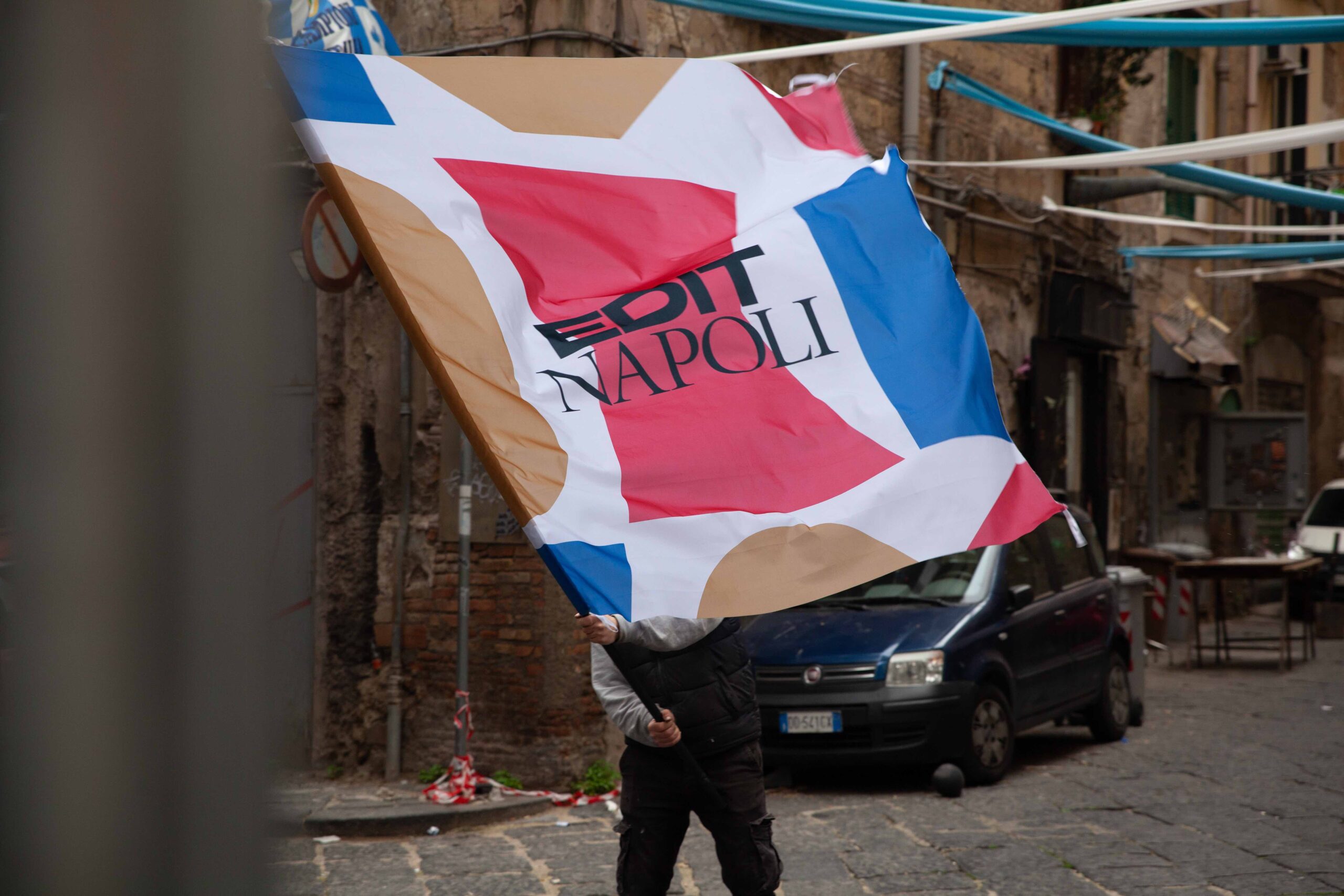 Photography by Alessandra Mustilli featuring EDIT Napoli’s branding
Photography by Alessandra Mustilli featuring EDIT Napoli’s branding
Words by Alexia Petsinis
If there’s not already enough to overload the senses in the vivacious southern Italian city of Naples with its own artisanal culture dating back centuries, let’s add an international design fair into the mix.
The fifth edition of EDIT Napoli amplified the city’s intrigue as destination layered with art and design discoveries, with over 100 exhibitors presenting their creations in a three-day program spanning some of Naples’ grandest and most storied locations, including the Archivio di Stato (State Archive) as this year’s main venue.
With a focus on values of craftsmanship and sustainability, the 2023 edition nurtured a new vision of design with international flair. Curated by the event’s founders Emilia Petruccelli and Domitilla Dardi, exhibitors explored how design reinforces our sense of place and purpose, and why it encourages us to forge deeper connections with others, and the world around us.
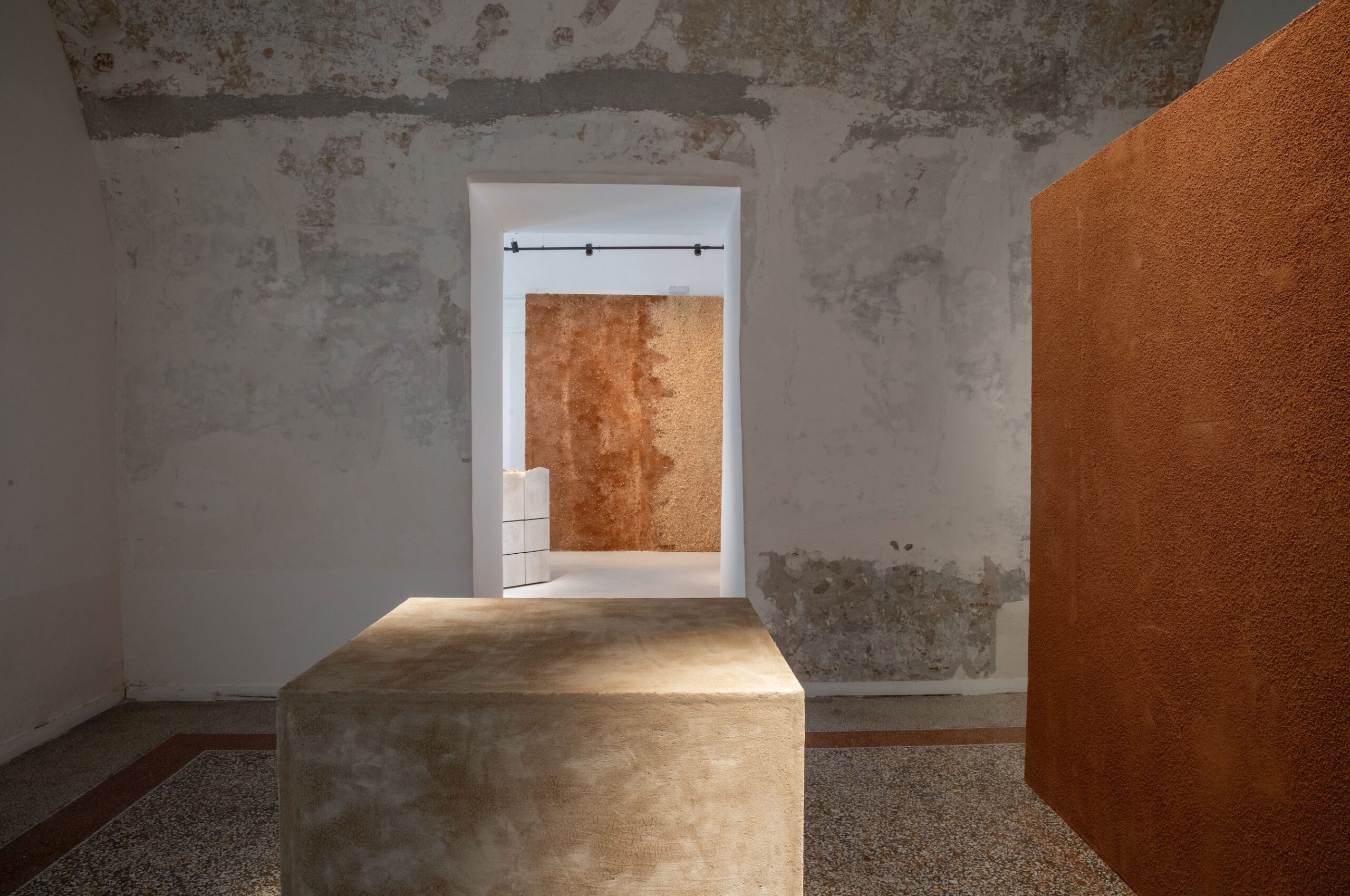 Photography by Eller Studio featuring Galleria Elena and PSLab with Altromodo Architects, Fondazione Santobono Pausilipon
Photography by Eller Studio featuring Galleria Elena and PSLab with Altromodo Architects, Fondazione Santobono Pausilipon
These ideas were further expressed in the fair’s EDIT Cult program, which presented a series of immersive design installations and special projects by internationally renowned designers, artists and companies including Fabio Novembre, Allegra Hicks, Sabine Marcelis for La Prairie and DWA Design Studio for Pedrali.
With exhibits and events held everywhere from decadent palazzos and ancient churches to subterranean artist studios nestled into the foothill Capodimonte, sensory overdrive was just the beginning.
Like the city of Naples itself, EDIT Napoli represented a series of dynamic contrasts that define its intrigue on the world design stage: heritage and modernity, locality and international perspectives, nostalgia and a future focus. All this and more, set against a backdrop of a city that is, in itself, a labyrinth of wonder and discovery. Here are some of our highlights from the fair.
1. A Matter of Perspectives by Ranieri – Installation by Francesco Meda and David Lopez Quincoces (EDIT Cult)
 Photography by Eller Studio featuring Ranieri
Photography by Eller Studio featuring Ranieri
Created in ‘the shadow of Vesuvius’ Campania-based Ranieri’s volcanic lava stone assumed an almost spiritual dimension in this site-specific installation designed by new creative directors Francesco Meda and David Lopez Quincoces. The fresco-lined cloister of the Renaissance-style Santa Maria la Nova monastery housed the installation of stone formations created solely from the volcanic material, emphasising its alluring natural surface texture, versatility of form and capacity for colour customisation. A glimpse into Ranieri’s new brand direction, the installation propelled lava stone into a sleek and artful new dimension.
‘We wanted to embody a moment of conviviality, to narrate a project with both aesthetic and functional characteristics. The public is invited to discover the natural material and to interact with it. We conceived the installation with the idea that it could be repeated in other places and contexts, giving it a longer and more multifaceted life,’ said Meda and Lopez Quincoces.
‘That is why we chose an elementary, almost primitive, neutral and universal language: we talk less about design, and more about material. We decided to create in respect of the material without prevailing, just as Ranieri conceived its own treatment of lava stone.’
2. I was looking for the mermaids by CCONTINUA + MAMT
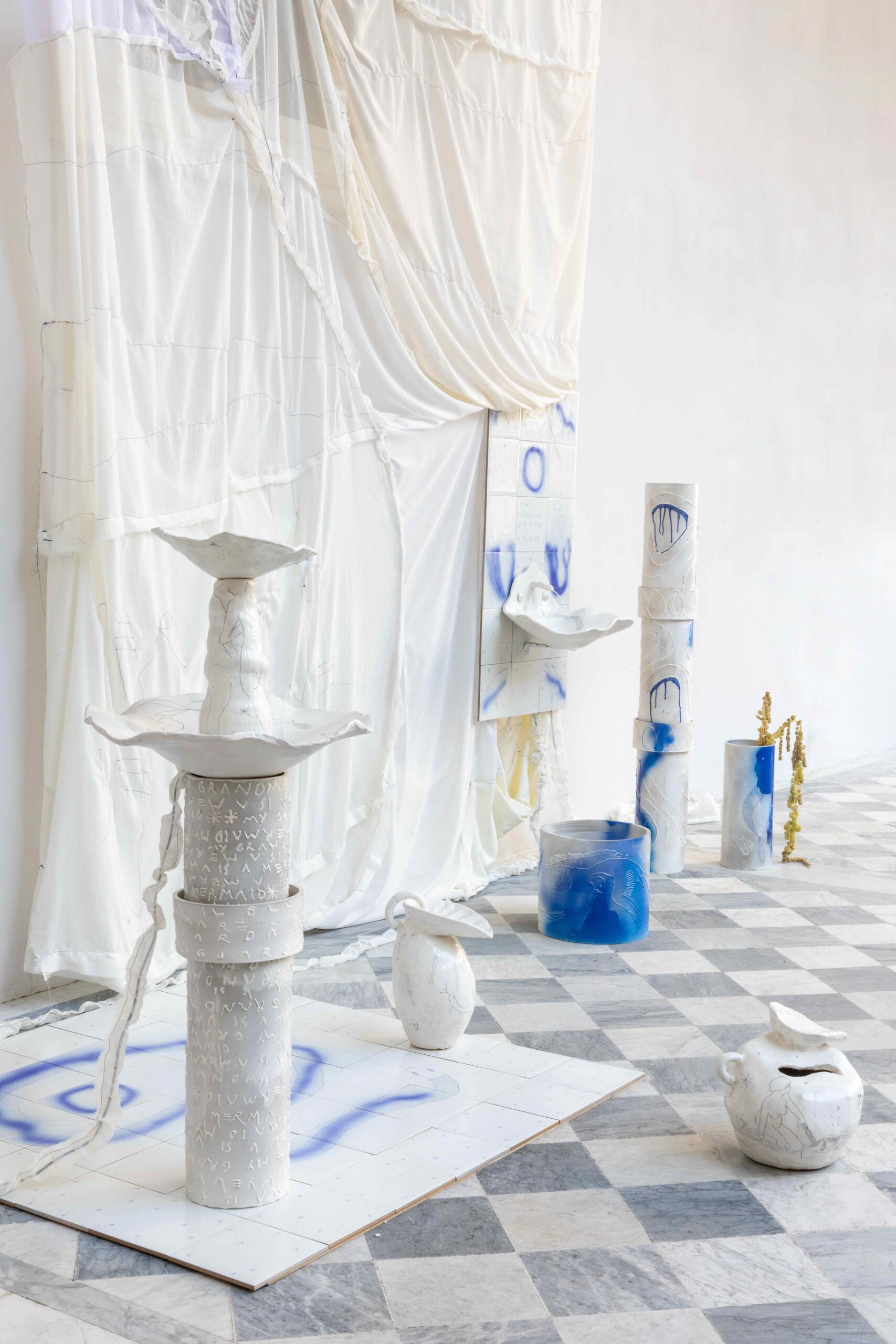 Photography courtesy of CCONTINUA + MAMT
Photography courtesy of CCONTINUA + MAMT
If you came to Naples looking for mermaids, you found them. The mystical installation by collaborative duo Chiara Caselli of ceramics studio CCONTINUA and artist Francesco Carrasso of MAMT drew upon ancient mythology of mermaids, which describes hybrid creatures who were half-fish and half-women.
Exploring the narratives surrounding these creatures through an immersive tableau of ceramic totems, tiles, vases and even a fountain inscribed with Carrasso’s art, the exhibit demonstrated the power of design as a vehicle for storytelling, connecting precious handcrafted objects with narratives from ancient culture and folklore.
After winning the major award at EDIT Napoli last year, CCONTINUA + MAMT returned to the fair with another thematically distinct project. The combination of clear glazed stoneware sculpted in organic forms, hand-decorated detailing and a shadowy ocean blue tone used across the installation recalled the poetic forms and rhythms of the natural world and beyond, encompassing land, water and of course, the fabled sirens of the sea.
3. Resin objects by Studio X
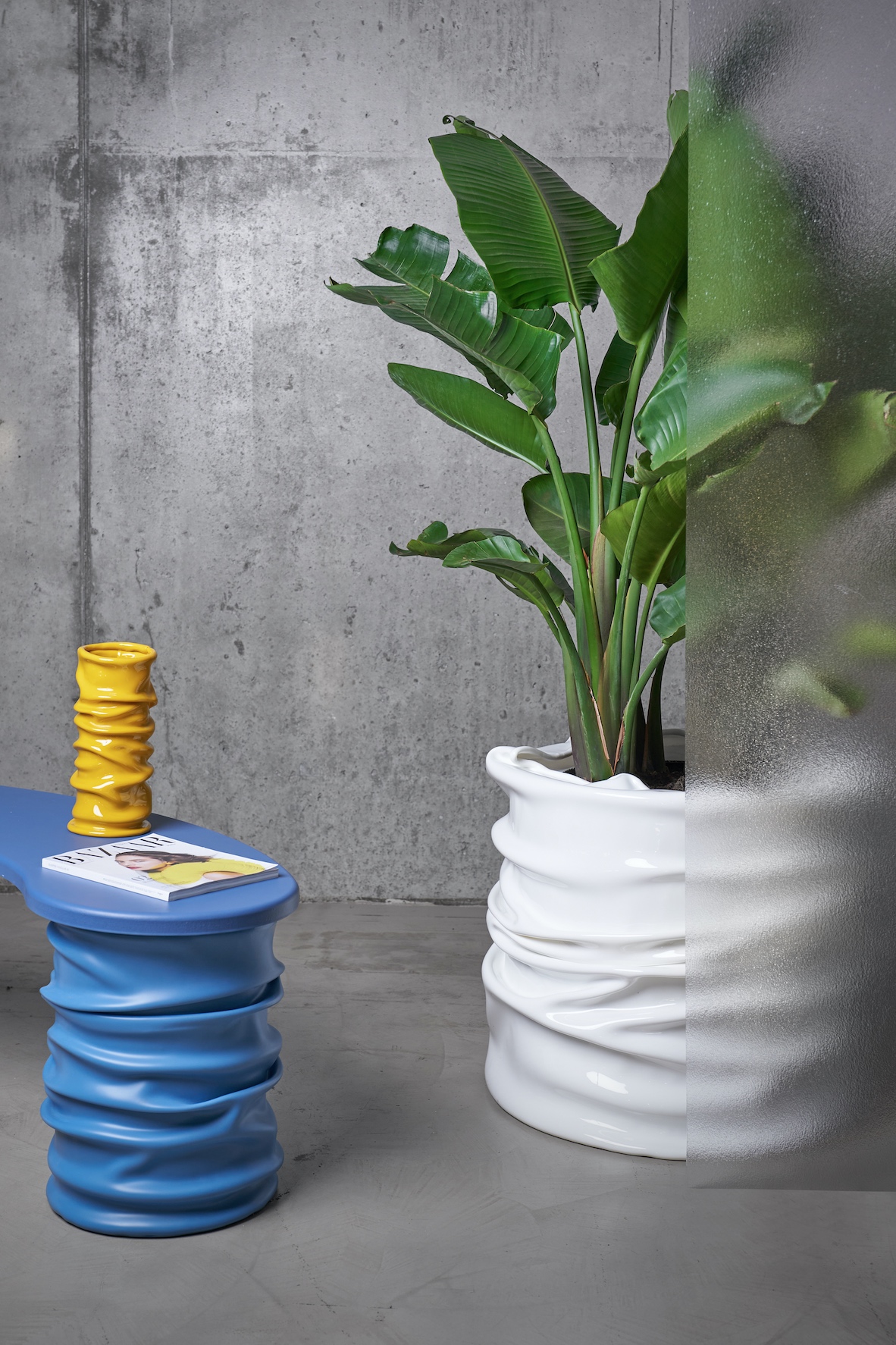 Photography courtesy of Studio X
Photography courtesy of Studio X
Milan-based Studio X presented a collection of hand-moulded resin vases, stools and tables created in a customisable ‘Pop’ palette including bubblegum pink and ice blue, exploring a playful sense of fluidity. Contrasted against the Archivio di Stato’s decadent painted ceilings and walls lined with volumes of ancient records, the resin creations were statement objects at the intersection of art and design, showcasing clever explorations into contemporary materiality and the creation of new forms.
Studio X also presented its signature Venere vase through a new sustainability-focussed production method called Fragments. This process sees the reuse of resin scraps from discarded products and samples, which are ground into shards and used as the basis for new objects, creating a terrazzo-like surface effect while fulfilling an enduring commitment to eco-friendly design (and to having fun).
4. Lucielle by Allegra Hicks (EDIT Cult)
 Photography by Eller Studio featuring Allegra Hicks
Photography by Eller Studio featuring Allegra Hicks
‘Lucia means light, so my piece is a homage to her,’ said artist and designer Allegra Hicks at her site-specific installation Lucielle inside Naples’ intimate Chiesa di Santa Lucia church-museum. Created using porcelain from project collaborator Istituto Caselli Real Fabbrica di Capodimonte, Hicks’s piece seamlessly fused conceptual art and product design in an elegant tribute to Santa Lucia, who is regarded as protectress of the eyes.
A flower assembled from eight porcelain ‘eyes’ and ‘pupils’ evoked the saint’s delicate feminine aura from a table in the centre of the church. As Hicks explained, the arrangement of decorative porcelain forms can be displayed as singular objects, or as a collective centrepiece running down a long table, depending on the occasion. Customary to Hick’s work, Lucielle was much a celebration of culture and narrative as it was an exploration of materiality and form.
5. Paper furniture-creatures by Jonathan Bocca
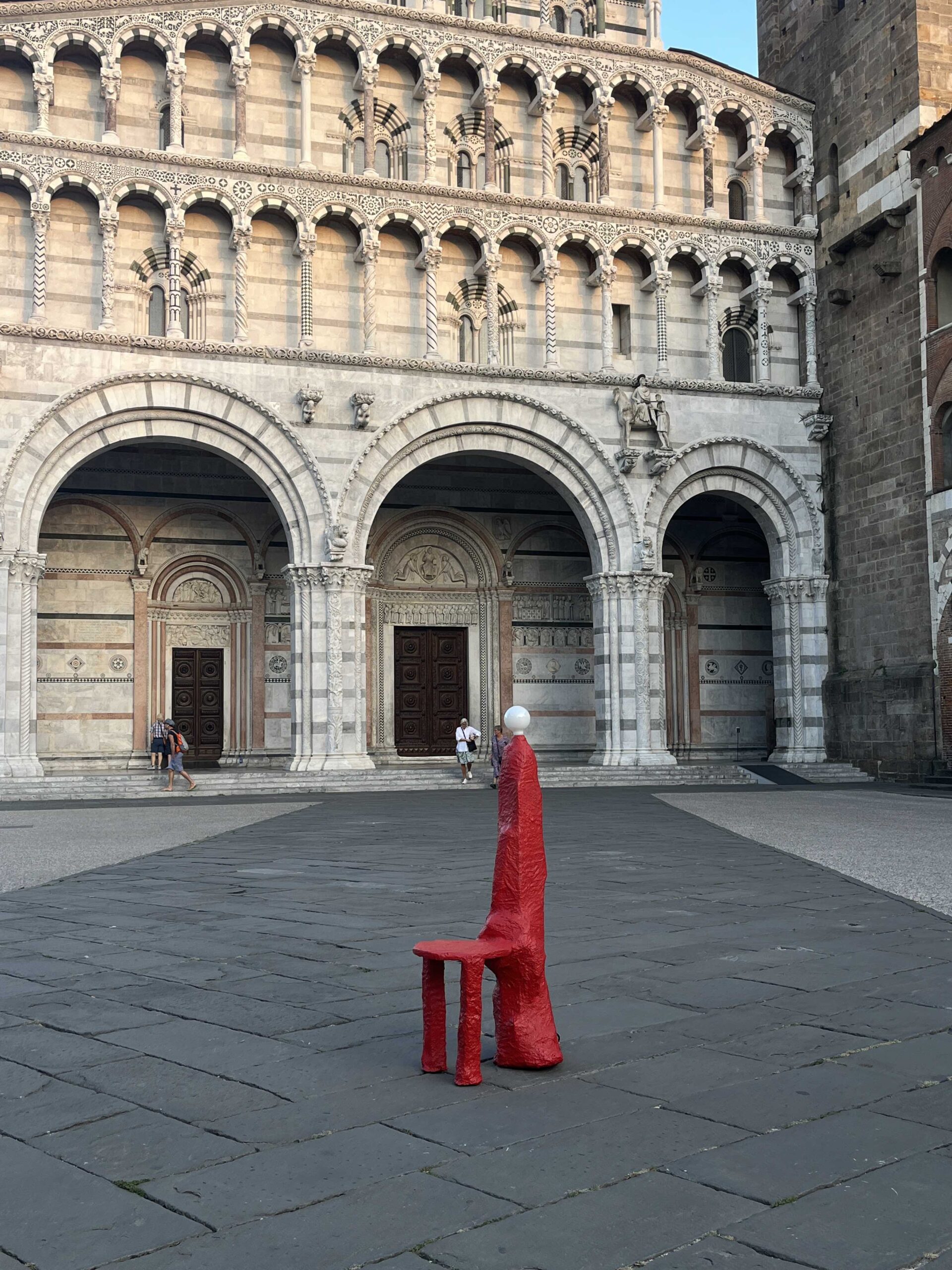 Photography courtesy of Jonathan Bocca
Photography courtesy of Jonathan Bocca
‘The enchanting ability of an object to transport us into realms of boundless imagination is truly remarkable,’ says sculptural designer Jonathan Bocca.
From a distance, Bocca’s sculptures look like the kind of creatures you might have met in a story book when you were a kid. Organic in form, wildly colourful, and made out of…paper? The founder of JOB Studio lives and works in Lucca in Tuscany, a city known for its paper production industry. His design philosophy is simple: take paper, an ‘everyday material’ and reimagine it as an imaginative sculptural object that goes beyond functionality.
Bocca’s flame-red Obelisco ‘chair’ crowned with a lightbulb turned more than a few heads at the fair, representing his mission to change the way we perceive design through imagination and experimentation with everyday materials.
6. Decorative wood columns by Pietrachiara
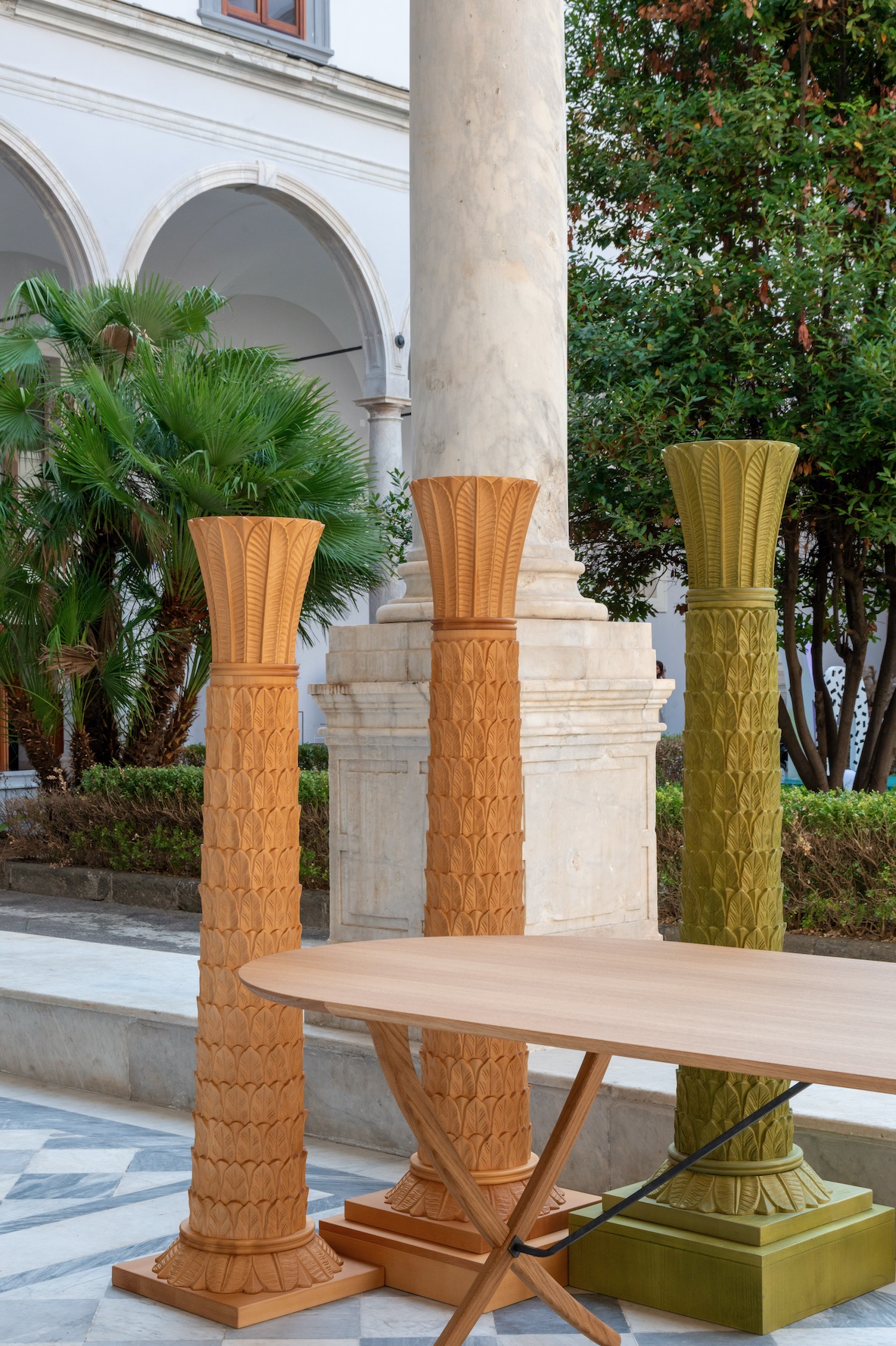 Photography courtesy of Pietrachiara
Photography courtesy of Pietrachiara
Hand-crafted linden wood columns by furniture and design studio Pietrachiara stood like elegant muses in the courtyard at Archivio di Stato. Part ancient Egyptian artefacts, part Art Deco idols, their design language revealed the studio’s fascination with combining classicism and modernity to reinterpret artisanal traditions through explorations of materiality and form.
The Milan-based design studio’s sustainability philosophy is based on the idea of creating objects from premium materials that not only last with time, but actually approve in character and appearance. Pietrachiara believes in the power of design to transcend trends, creating precious objects bearing historical and artisanal stories that may remain in the home for decades, and be passed down from one generation to the next.
7. The Cobalt House – Sabine Marcelis x La Prairie (EDIT Cult)
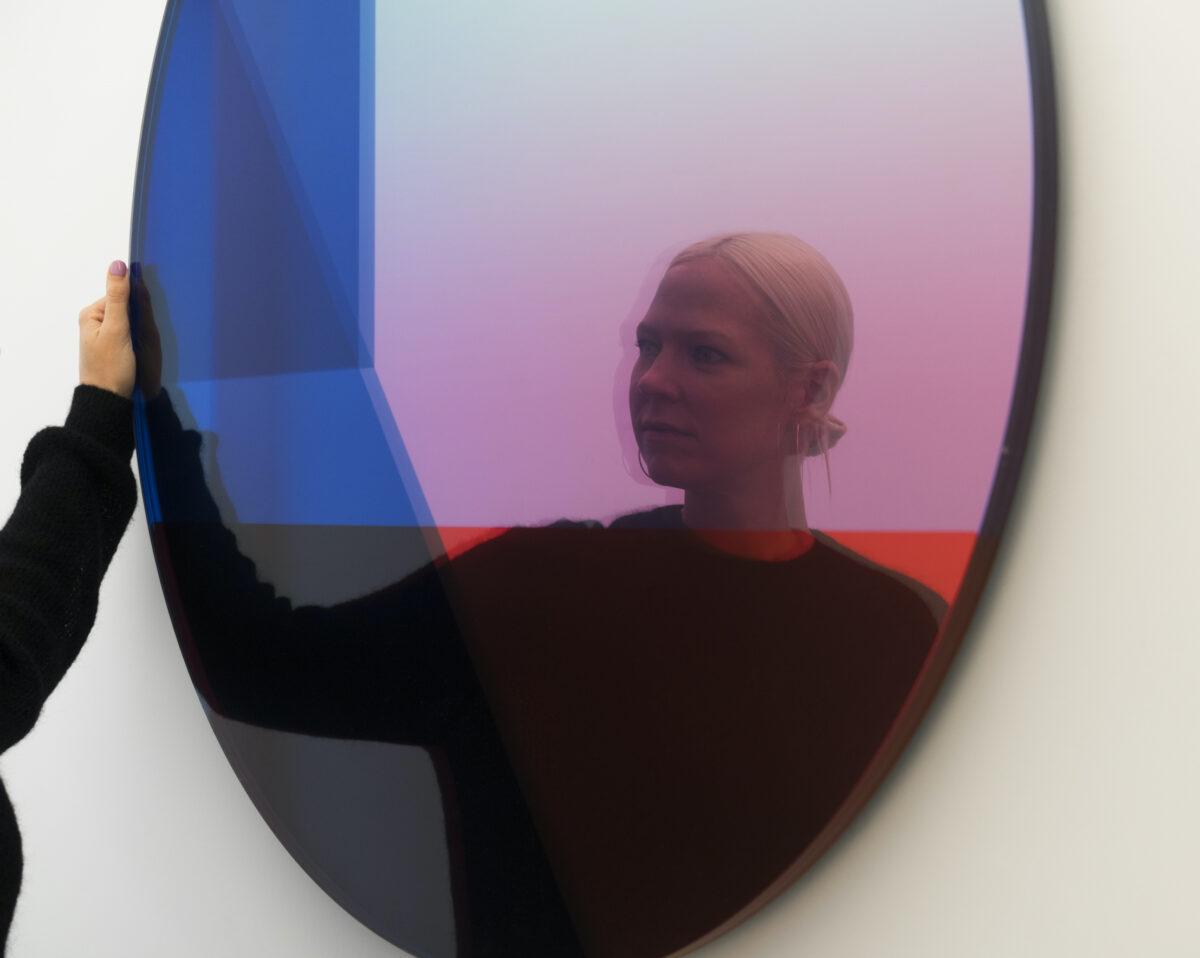 Photography courtesy of Sabine Marcelis
Photography courtesy of Sabine Marcelis
Perched on a cliff overlooking the sparkling Gulf of Naples, Palazzo Donn’Anna is a treasure trove of artisanal heritage, and it brought an atmosphere of grandeur to The Cobalt House installation by Sabine Marcelis for La Prairie. An ongoing partnership between the Dutch designer and the luxury skincare brand has seen Marcelis reimagine its signature codes through design objects and immersive spaces that invite what she calls a “dialogue with the user.”
‘The pieces I have designed for The Cobalt House explore juxtapositions between hard and soft, between sharp and organic, and between tones of strong cobalt and delicate cream. I always like to create a sense of tension in my work, and seeing the pieces here in this huge, decorative palazzo really highlights these tensions even more I think,’ said Marcelis.
From striking cobalt blue tables, to chairs and sofas echoing the forms and textures of La Prairie’s luxury creams, The Cobalt House celebrated the allure of design to translate sensory experiences from one tangible medium to another, even in the most nuanced ways.
8. Eco-Contemporary flair by No Smoking The Future
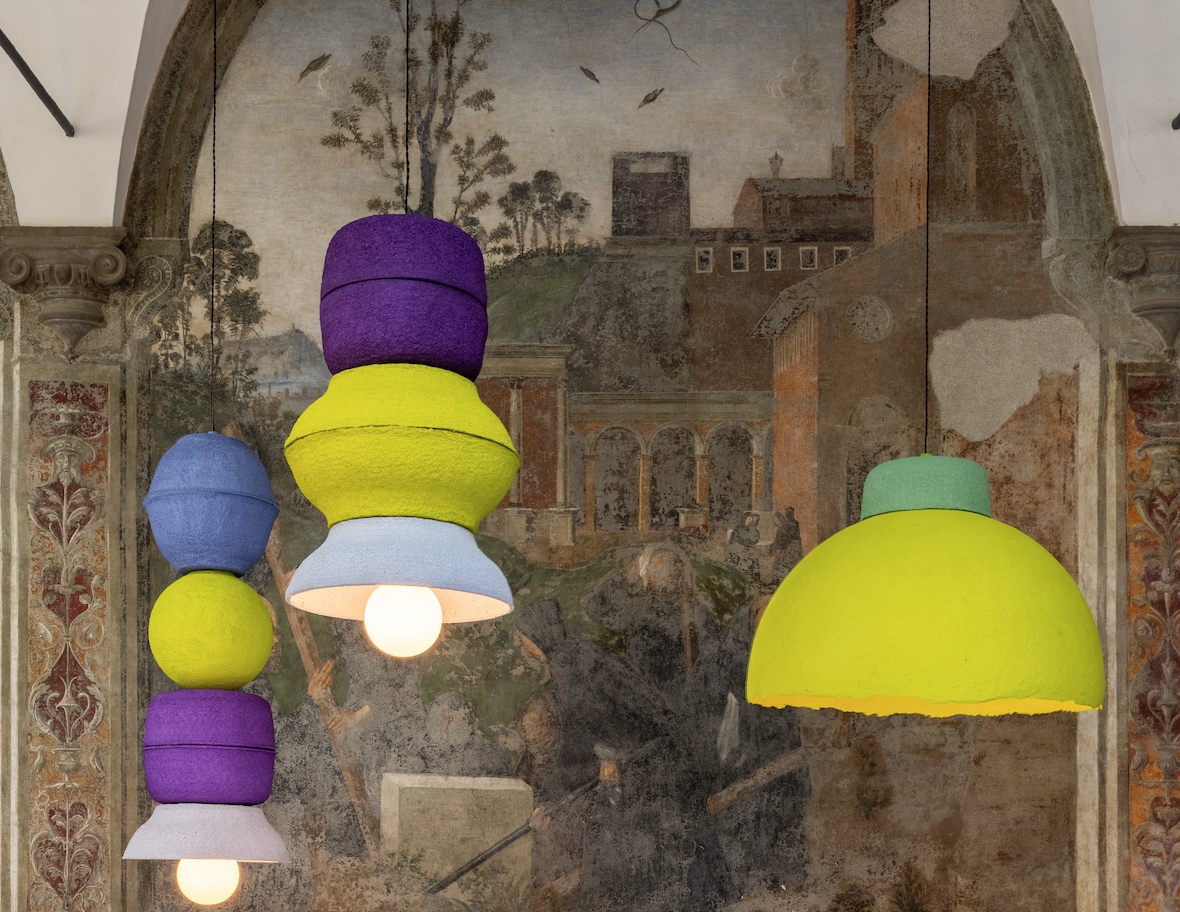 Photography by Eller Studio
Photography by Eller Studio
‘Our lamps are like benevolent fairies from ancient fables, objects suspended between the earthly and the divine that bring good news: in aesthetics we have found ethics,’ says Andrea Epifani and Stefania Stammera of Puglia-based ‘Eco-Contemporary’ furniture design studio No Smoking The Future.
Hand-crafted from fully biodegradable composite materials including paper from printing waste, cellulose-based glue and other natural materials, the designers have cultivated a practice that seamlessly fuses aesthetic innovation, conceptual storytelling, and an enduring commitment to sustainable design. Presenting their collection of chairs, tables and hanging lights from its Thank You Plastic collection in an exuberant colour palette, No Smoking The Future celebrates the inconsistencies that come from natural materials and the handcrafting process. The designers celebrate the fact that they are unable to replicate the same surface details or textural nuances on any two of their creations.
With a hip 70s colour palette that lures you in from across the courtyard, the studio’s Babajaga light was an immediate talking point for fair visitors who came closer to discover its varied surface textures. Created from modular blocks strung together in a form reflecting ancient rituals of bead-threading, the object embodied the ideal balance of aesthetic playfulness and eco-conscious innovation that has earned No Smoking For The Future a diverse international client base.



















